Traditional Chinese Medicine : An Essential Guide
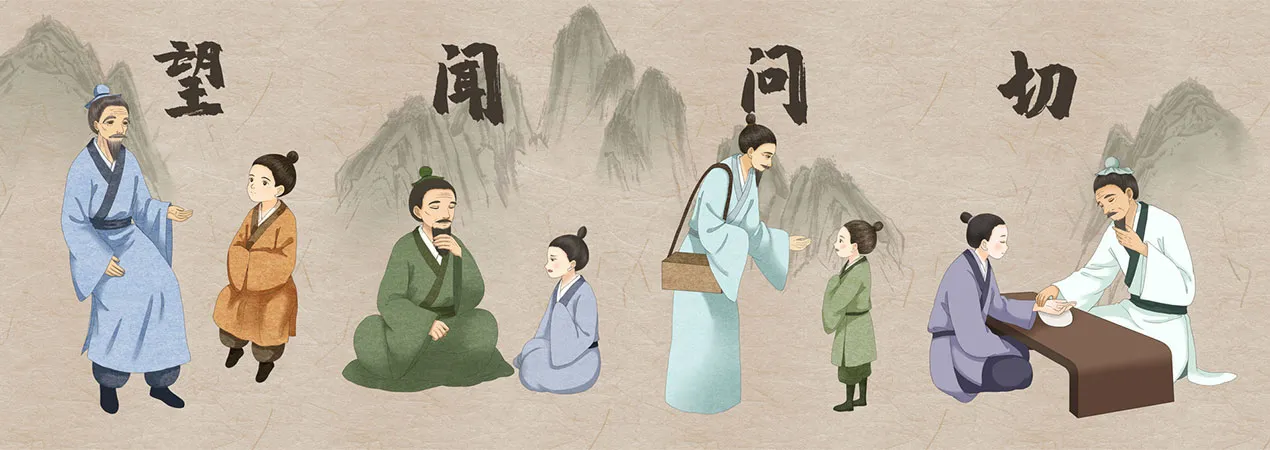
China has one of the oldest medical systems dating back to over 2000 years. The earliest known written record of Chinese medicine is the Huangdi Neijing (The Yellow Emperor’s Classic of Medicine) from the 3rd Century BCE. This classic writing provided the theoretical concepts for TCM, that remain the basis of its practice today. Traditional Chinese Medicine is based on balance, harmony, and energy. It seeks to restore the balance between two complementary forces, yin (passive) and yang (active), which is the fundamental concepts in TCM.
Traditional Chinese Medicine has been used to combat diseases for centuries since the first pandemic in 243 BC recorded in Shi Ji (Historical Records). In light of the novel coronavirus (Covid-19) showing no signs of slowing down, Traditional Chinese Medicine played a substantial role in disease mitigation, along with Western medicine. According to a Chinese state media report, since the beginning of the outbreak in Wuhan, Hubei, more than 90% of Covid-19 patients in China have been treated with TCM with an overall efficacy rate of over 90%.
Nowadays, TCM is making a mark in the West, as the booming wellness market and many GPs are looking to treat diseases at a holistic approach, its popularity has surged.
What is Traditional Chinese Medicine (TCM)?
Traditional Chinese Medicine is an ancient system of health and wellness that’s been developed and used in China for thousands of years. Western medicine tends to view the body a lot like a car. It has different systems that need the right inputs and outputs. It’s very concrete and logical. If the engine has a problem, we’ll fix the engine, and if the tire has a problem, we’ll fix the tire. TCM, on the other hand, doesn’t focus on the illness or virus. Instead, it’s based on balance, harmony, and energy. If the patient tells the doctor that the engine has a problem, the doctors may fix the tire as they think that is the root of the engine problem.
What Are the Most Important Concepts of TCM?
To understand the mechanism of TCM, you need to understand the following important concepts:
Qi or Chi
It is known as your life energy or vital energy. The belief is that it runs throughout your body. It’s always on the move and constantly changes. TCM treatments often focus on ways to promote and maintain the flow of healthy Qi.
Yin and Yang
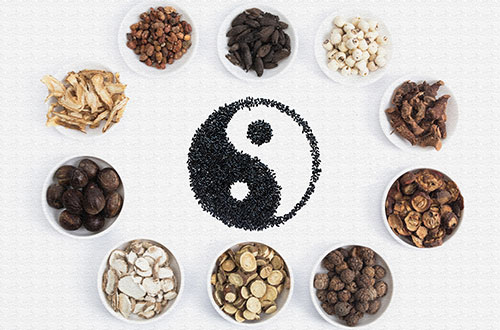
The belief is that everything in life has its opposite, and balance is the key. When you balance the yin and yang of Qi, you feel healthy and well. If they’re out of sync, you get sick. TCM aims to create harmony and a healthy flow of Qi.
Five Phases or Five Elements
The Five Elements are a comprehensive template that organizes all natural phenomena into five master groups or patterns in nature. Each of the five groups—Wood, Fire, Earth, Metal, and Water—include categories such as a season, a direction, climate, stage of growth and development, internal organ, body tissue, emotion, aspect of the soul, taste, color, sound . . . the categories are seemingly limitless. The Five Elements reflect a deep understanding of natural law, the universal order underlying all things in our world. Within the structure of the Five Elements, there are two fundamental relationships: generation and support. Without the balancing nature of these two relationships, things would fall out of order in a flash.
Zang-Fu
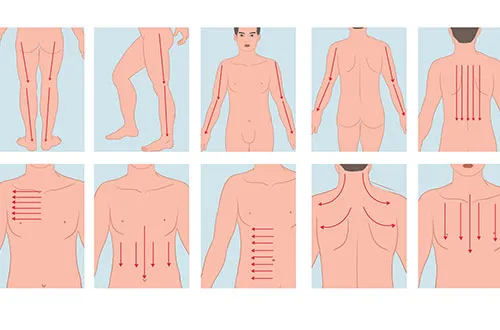
The Zang-fu is a collection of organs that produce and regulate Qi within the body. Unlike in Western medicine, these organs should not be thought of as anatomical structures, but rather as interconnected functions that explain how Qi is produced within the body. The functions performed by each organ are referred to as the organ’s Qi (i.e. heart qi). In total, there are 11 organs, five zang, and six fu. Zang organs: Zang (脏) refers to the five organs that are yin. Collectively, their primary purpose is to produce and store qi, xue (blood), jinye (body fluids), jing (essence), and shen (Spirit). They are lung, liver, kidney, heart, and spleen.
Fu organs: fu (腑) refers to six organs that are yang. Collectively, their primary function is to transmit and digest nutrients without storing them and to excrete waste. They are: stomach, small intestine, large intestine, urinary bladder, gall bladder, and sanjiao (also called Triple Heater, Triple Burner, Triple Warmer, or Triple Energiser).
As mentioned earlier, each of the Zang-fu organs has a yin-yang pair and follows a Five Elements cycle. This means that each Zang-fu pair corresponds to one of the Five Elements and they interact in a cyclical function with each other. They also correspond to one of the five colors. The chart below helps demonstrate their relationships.
| Five Elements | Zang Organ | Fu Organ | Season | Color |
|---|---|---|---|---|
| Metal | Lung | Large Intestine | Autumn | White |
| Wood | Liver | Gall Bladder | Spring | Green |
| Water | Kidney | Bladder | Winter | Black |
| Fire | Heart | Small Intestine | Early Summer | Red |
| Earth | Spleen | Stomach | Late Summer | Yellow |
Jingluo / Meridians
The channels or meridians through which Qi flows. Although Qi permeates every part and every aspect of the body, it tends to collect and travel along pathways called "jingluo." These are the so-called "meridians" of acupuncture. The jingluo channel system connects all aspects of the body into one network of energetic communication.
What Does Traditional Chinese Medicine Treat?
“Traditional Chinese Medicine (TCM) treats some issues and approaches to treating ailments from a holistic perspective. A variety of symptoms are treatable such as pain, IBS, colitis, infertility, neuropathy, arthritis, insomnia, stress, and depression. TCM can treat chronic and/or acute problems as well.”
What Are the Advantages of TCM?
- A TCM doctor is a moveable hospital. He or she may need some acupuncture needles, but no need for all the equipments as in modern hospitals.
- The herb medicine and acupuncture therapy TCM use has fewer side effects.
- The cost is minimal. You don’t need to do all kinds of checkups on expensive machines as that in modern hospitals.
- Chinese medicine is traditionally seen as preventative. It excels in the use of tonics to maintain a tenuous hold on health. There is the old saying “You pay your Chinese doctor when you are well and stop paying when you fell sick.
What Are the Four Diagnostic Methods TCM Use?
Traditional Chinese Medicine Practitioners perform their clinical assessment through four diagnostic methods: Inspection (望), Listening & Smelling (闻), Inquiring (问) and Palpation (切). The four methods of diagnosis of Traditional Chinese Medicine is a direct, fast, convenient holistic approach to understanding a person’s individual situation even before symptoms present themselves, thus being able to bring the body back into good health without having to fight serious illness.
Inspection
Using visual inspection to observe for any abnormalities in patients’ spirit, complexion, physical conditions, and actions. Observing a patient’s appearance could help TCM doctors discover the pattern and development of the illness. Does he or she have bright eyes? Does he or she have healthy skin or damaged skin?” Traditional Chinese Medicine believes that the five sense organs on the face are reflections of the five major inner organs. The eyes reflect the diverse health; the nose reflects the lungs; lips reflect the spleen; ears reflect the kidneys and the tongue reflect the heart. Thus, a doctor can tell just by looking at the face if there is any health problem internally.
Listening & Amp; Smelling (Auscultation and Olfaction)
To detect any abnormalities in the voice or respiration of patients. Attending to odors emitted through patients’ breath, secretions and excretions can help in diagnosing patients’ conditions.
Inquiring
Inquiring involves asking the patient or the patient's companion about the disease condition to assist diagnosis. Because the chief complaint of the patient is of primary importance, the main information dealing with the problem must be carefully solicited. It is necessary to grasp the important clinical data as well as to get a general understanding of the patient's disease condition. The main questions TCM doctor will ask including:perspiration,appetite for food,drink, and taste, defecation and urination, for women, menses and leucorrhea.
Palpation (Pulse-taking)
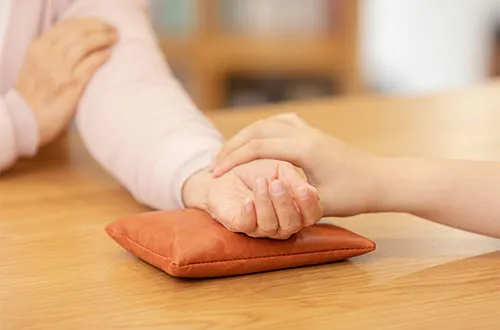
Pathological changes and functions of each organ can be predicted by palpating the pulse and through pressing corresponding body parts. Pulse-taking is the essence of TCM as well as a distinguishing feature of TCM. Cun, Guan, and Chi, three acupoints on the wrist, where the pulse is usually taken, are placed on the wrist from the outside to the inside. They represent different organs, namely the heart, liver and kidney. Pulses on the right-hand represent lung, spleen and vital gate.
There are around 27 types of pulse, such as floating pulse, deep pulse, full pulse, fine pulse, feeble pulse, replete pulse are just a few examples. The differences are very subtle. Hence diagnosis through pulse taking is not easy to master. It will take a long time for a doctor to master it.
What Kind of Treatment Methods Does TCM Use?
There are several treatment methods TCM use, the most common ones are:
Acupuncture
Very fine needles placed gently in the skin
Herbal Medicine
Teas, powders, and capsules made mostly from plants (some also from minerals and animal parts).
Cupping
Heated cups that create suction on your skin. Cupping increases blood circulation to the area where the cups are placed. This may relieve muscle tension, which can improve overall blood flow and promote cell repair. It may also help form new connective tissues and create new blood vessels in the tissue.
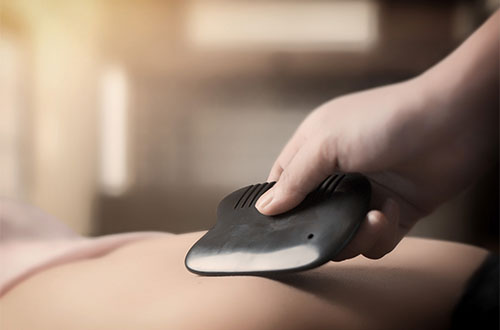
Gua Sha
Gua Sha
Used in China for centuries as a folk remedy, the name translates as “to scrape” (gua) and “sand” (sha). The practice of Gua Sha is using a tool to sweep the skin in an downward motion releasing stagnant blood and lymph, to promote circulation and healing.
Dao Yin (conduction exercise)
Literally means “leading or pulling”. The intention of Dao Yin is to forcefully clear stagnation out of the body tissues and meridians.
Moxibustion
It involves burning moxa, a cone or stick made of ground mugwort leaves, on or near your body’s meridians and acupuncture points. TCM believe that the resulting heat helps stimulate these points and improves the flow of qi (energy) in your body.
Tui Na (Massage therapy)
According to Traditional Chinese Medicine theory, blocked meridian pathways will cause long-term physical discomfort. Tui-na is guided by the objective of “dredging” meridian pathways and promoting Qi and blood flow. Meridians are closely connected points within the human body that form a complete circulatory system.TCM practitioners use their elbows, fingers, and hands to stimulate acupuncture points in a rhythmic manner, thus producing a vibration that influences the flow of energy through the body. Since Acuponts are corresponding with our organs, a quality Tui-na session is said to have a positive effect on our physical well-being.
Debate on Safety and Effectiveness of TCM
Since the late 19thcentury, Western medicine was introduced into China and soon won a lot of followers, the safety and effectiveness of TCM was debated. In 1929, calls by western trained doctors to ban traditional Chinese medicine were rejected by the National Medical Assembly in Shanghai. For conservationists, the continued use of endangered animal parts, including from pangolins, tigers, leopards and rhinos, was endangering the reputation of the practice and industry. In 2016, the death of a young Chinese actress who chose to treat cancer with TCM instead of chemotherapy triggered a debate around the effectiveness of Chinese medicine.
The effectiveness of Chinese medicine is in most cases unproven, and only a few herbs have been tested systematically for toxicity or carcinogenicity in the same way Western medicines are in the United States and Europe. Western medicine is evidence-based science, whereas Traditional Chinese Medicine is experience-based science. Comparing TCM with Western Medicine is not apple-to-apple; it’s apples-to-oranges. TCM is a science based on years and years of observations and inductions. Such science doesn’t fit or match the scrutiny of the modern Western medicine which is analytical and evidence-based in nature. We just can’t compare apples with oranges.
Recommended Books to Learn More TCM
If you want to learn more about TCM, we recommend that you can read some TCM books or even visit a TCM clinic. We recommend the following books for anyone who is interested in TCM.
1. Voices of Qi: An Introductory Guide to Traditional Chinese Medicine (2000 Edition)- By Alex Holland
This is a very good introductory guide to Traditional Chinese Medicine. It is for anyone who is curious about TCM but does not want to read large books on the topic. This book is written without lots jargon or unnecessary details.
2. The Web That Has No Weaver: Understanding Chinese Medicine (2000 Edition)- By Ted Kaptchuk
It is a classic, comprehensive guide to the theory and practice of Chinese alternative medicine.The author was student of acupuncture since its US introduction (Acupressure) in the early 80's, this book is a clear presentation of the intricacies of Acupuncture. This presentation captures Eastern and Western unique and quite different approaches to health and well-being.
3.Everyday Chinese Medicine: Healing Remedies for Immunity, Vitality, and Optimal Health Illustrated Edition - By Mindi K. Counts
This book has a lot of practical suggestions for teas and herbs and foods that you can incorporate into your life, as well as much more advanced material the gets deep into Chinese medicine
We design exclusive excursions into Chinese culture for valued guests like you. Our pathways lead you to engage Chinese remedies and botanicals hands-on, obtaining more intimate knowledge of China's heritage along your voyage.
